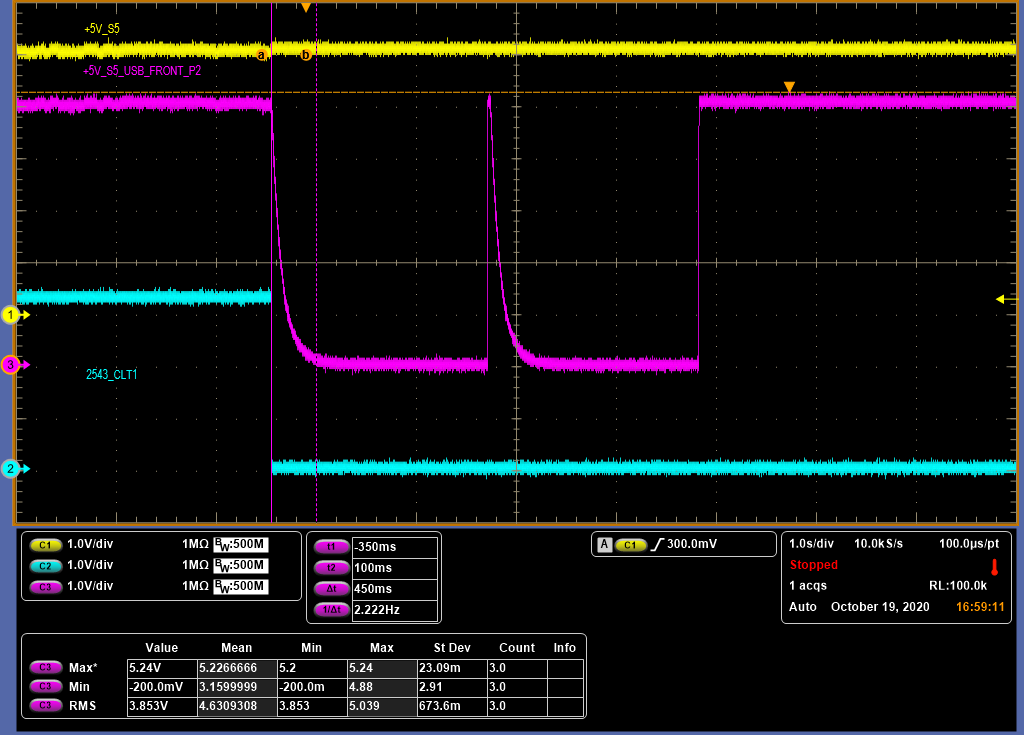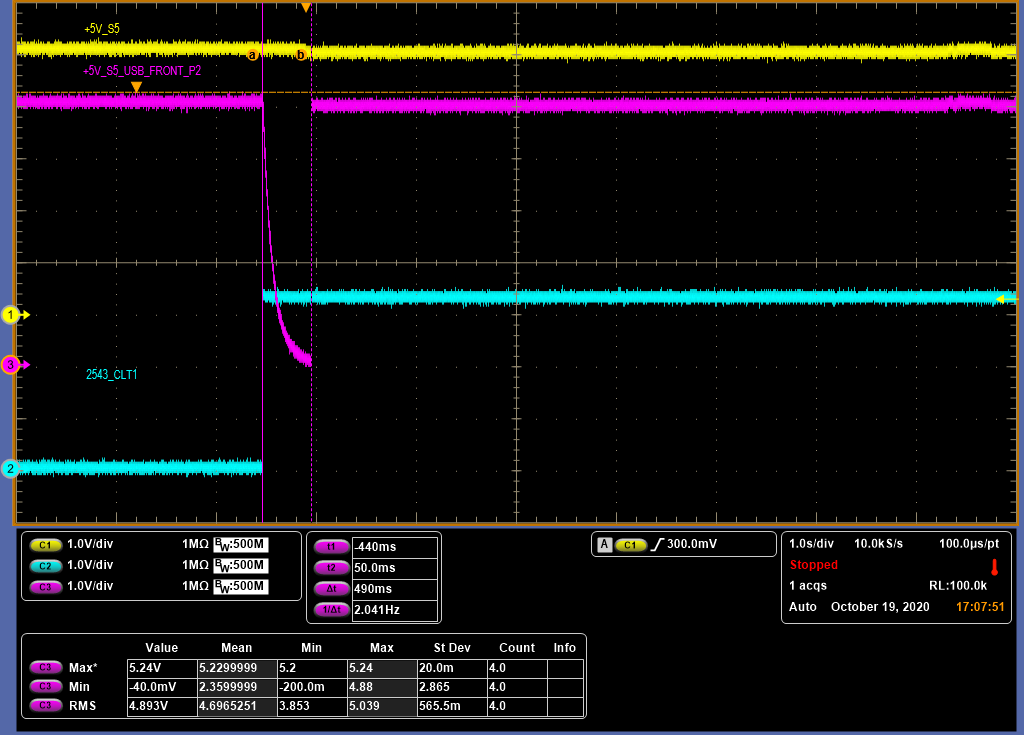Hi team,
My customer design the TPS2546 to work under below 2 cases and reported "wake on USB" by mouse feature is abnormal sometimes with some mice.
| CTL1 | CTL2 | CTL3 | ILIM_SEL | |
| system S0: CDP | 1 | 1 | 1 | 1 |
| system S3: DCP Auto | 0 | 1 | 1 | 1 |
The customer did not involve the D+/D- capture yet while regarding the CTL1 and Vbus waveform I have some questions.
1. S0 sleep to S3 and Vbus discharge appears. Can NOT wake on USB (wireless mouse)
2. Sleep from S0 to S3 and no Vbus discharge appeared. Wake on USB function is normal in this case.
Also fail waveform from S3 to S0 (can't wake up from mouse)
waveform from S3 to S0 (can wake up from mouse)
Could you please review and suggest if the Vbus discharge is related to the issue? Usually from CDP to DCP auto and also backward there should be a Vbus discharge expected. While seems it's different on the wake on usb case. Is this expected? And what is the expected waveform/workflow?
Thanks
Max




